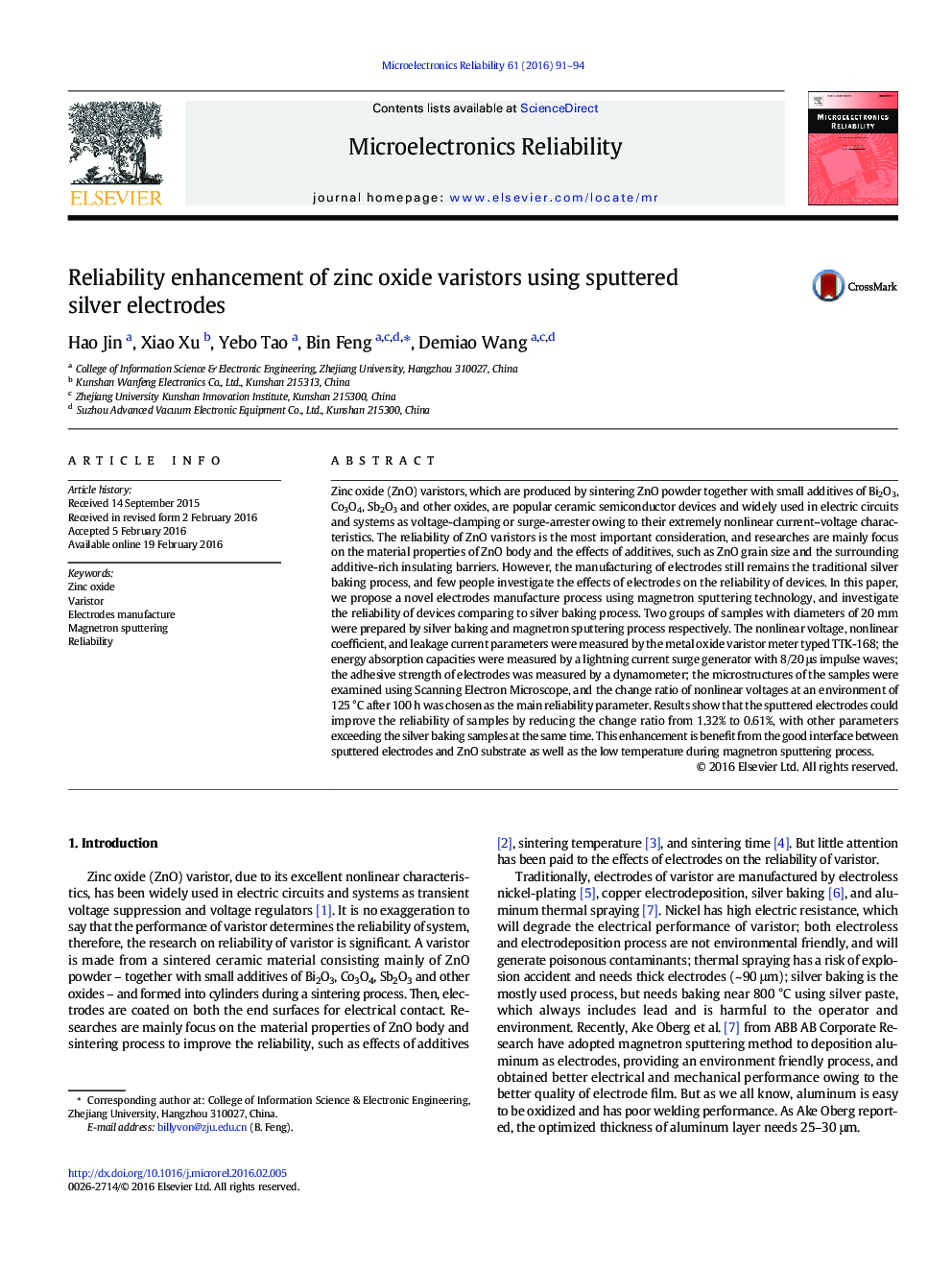| Article ID | Journal | Published Year | Pages | File Type |
|---|---|---|---|---|
| 544617 | Microelectronics Reliability | 2016 | 4 Pages |
•NiCr/Cu/Ag multilayer electrode prepared by magnetron sputtering is proposed for zinc oxide varistor;•Mechanical, electrical and reliability performance of varistors with sputtered and silver baked electrodes are compared;•The adhesive strength increased from 9.7 to 13.9 MPa;•The nonlinear coefficient and leakage current increases and decreases by 45.5% and 53.8% respectively;•The change ratio of nonlinear voltage before and after 125°C 100 hours test reduces from 1.32% to 0.61%.
Zinc oxide (ZnO) varistors, which are produced by sintering ZnO powder together with small additives of Bi2O3, Co3O4, Sb2O3 and other oxides, are popular ceramic semiconductor devices and widely used in electric circuits and systems as voltage-clamping or surge-arrester owing to their extremely nonlinear current–voltage characteristics. The reliability of ZnO varistors is the most important consideration, and researches are mainly focus on the material properties of ZnO body and the effects of additives, such as ZnO grain size and the surrounding additive-rich insulating barriers. However, the manufacturing of electrodes still remains the traditional silver baking process, and few people investigate the effects of electrodes on the reliability of devices. In this paper, we propose a novel electrodes manufacture process using magnetron sputtering technology, and investigate the reliability of devices comparing to silver baking process. Two groups of samples with diameters of 20 mm were prepared by silver baking and magnetron sputtering process respectively. The nonlinear voltage, nonlinear coefficient, and leakage current parameters were measured by the metal oxide varistor meter typed TTK-168; the energy absorption capacities were measured by a lightning current surge generator with 8/20 μs impulse waves; the adhesive strength of electrodes was measured by a dynamometer; the microstructures of the samples were examined using Scanning Electron Microscope, and the change ratio of nonlinear voltages at an environment of 125 °C after 100 h was chosen as the main reliability parameter. Results show that the sputtered electrodes could improve the reliability of samples by reducing the change ratio from 1.32% to 0.61%, with other parameters exceeding the silver baking samples at the same time. This enhancement is benefit from the good interface between sputtered electrodes and ZnO substrate as well as the low temperature during magnetron sputtering process.
